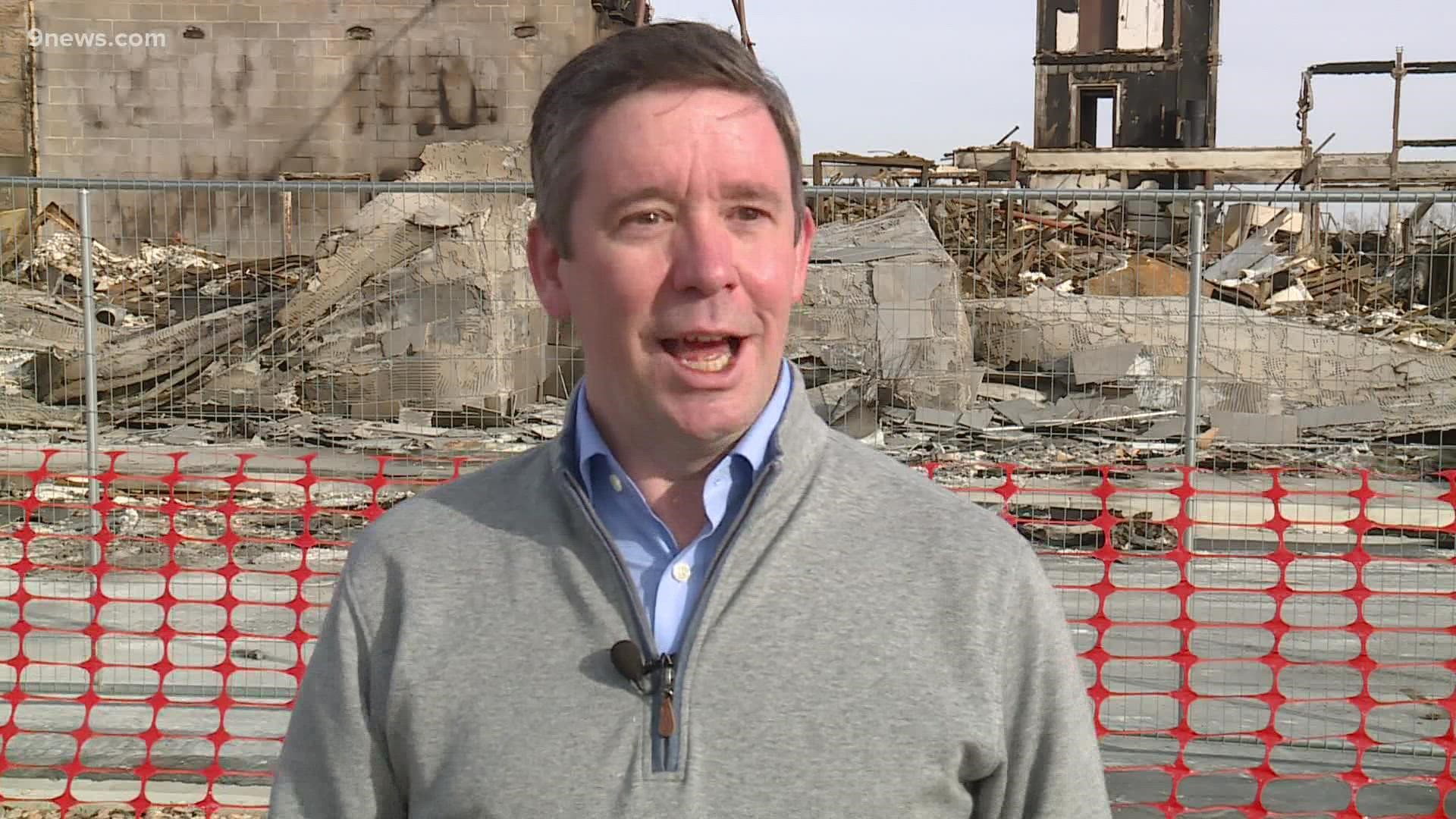SUPERIOR, Colo. — Scientists investigating the Marshall Fire are coming up with solutions to minimize losses in the next wildfire.
Researchers with the Institute for Business and Homes Safety (IBHS) traveled to Superior and Louisville to gather data and information about the behavior of the Marshall Fire.
They said the way that fire spread from one house to another was similar to falling dominoes.
“And it’s our work on the science to find those ways so that if something ignites, we don’t see that domino, we don’t see that tipping event,” said Roy Wright, President and CEO of IBHS.
Wright said there is no such thing as a fire-proof home, but you can make your home wildfire resilient, which means it has a better chance to resist wildfire.
And that starts by creating a five-foot defensible perimeter around your house.
“The five feet that surround the structure need to be entirely noncombustible," said Wright. "Entirely. Nothing in that space can burn.”
That means no trees, shrubs or bushes. No wood mulch. No firewood piles. No garden hoses. No propane tanks. Cars should be parked at least five feet away from your home. Debris must be cleared from nooks and gutters, and patio furniture must be noncombustible.
At their lab in South Carolina, IBHS scientists recreate wildfire conditions to see how accumulating embers ignite homes.
“We’ve actually done research here in the lab to say is five feet enough, should it be seven feet, would three feet be okay?” said Dan Gorham, a research engineer with IBHS.
He said the effectiveness of the 5-foot defensible zone is proven.
Gorham said a neighborhood is most resilient to wildfire if all the homes have a five-foot noncombustible zone.
"I might have done the right things to my home, you might have done the right things to your home, but our mutual neighbor hasn't," he said. "So their vulnerability has now become our vulnerability."
He said those conversations with our neighbors might be difficult, but they could ultimately save an entire community.
Fences are also part of that perimeter.
IBHS teams found evidence in the Marshall fire where flames used wooden privacy fences as a pathway to spread between homes.
That’s another issue they’ve been researching in their lab. Recreations show fences acting like matchsticks that are directly attached to homes.
“We’re looking for product innovation," said Gorham. "Manufacturers that can create fences that can both achieve what the homeowner wants, that privacy fence look, but are also made of noncombustible materials that we know are really important to wildfire resistance.”
Gorham said a fully noncombustible fence would be ideal, but you can protect your house by just replacing a 5-foot section of wood fence where it’s connected to your house with metal fencing.
The IBHS research team found examples in the Marshall Fire where homes were saved because the fences were blown down in the wind preceding the fire. And they also found that firefighters saved homes from burning by knocking down fences during the fire.
SUGGESTED VIDEOS: Marshall Fire Coverage

